In this compassionate guide, we understand the importance of a healthy scalp for both hair growth and overall well-being. Scalp exfoliation not only helps remove dead skin cells, excess oil, and product buildup, but it also creates a nourishing environment for your hair follicles to thrive. We will gently guide you through the process of creating your own DIY scalp exfoliation formula using natural ingredients you can find at home. By following our step-by-step instructions, you can enjoy the revitalizing benefits of scalp care while embracing the power of natural remedies. Your journey to a healthier scalp starts here!
Gather your ingredients.
The table of content
Gather the necessary ingredients for your DIY scalp exfoliation formula. Use the following components for an effective mixture:
- Exfoliant: Choose between sugar or sea salt. Both options help remove dead skin cells and promote a healthy scalp.
- Moisturizer: Select coconut oil or olive oil. These oils provide nourishment and hydration, ensuring your scalp remains moisturized.
- Essential oils: Opt for tea tree oil or peppermint oil. These oils offer added benefits, such as soothing irritation and invigorating the scalp.
Ensure all ingredients are clean and suitable for use on your scalp. Check expiration dates and avoid any ingredients that may cause allergic reactions.
Choose a base.
Select a base for your formula. Choose oils like coconut oil or olive oil, as they provide hydration and help the exfoliating agents stick to the scalp. Measure approximately 1/4 cup of your chosen oil. Place the measured oil in a mixing bowl.
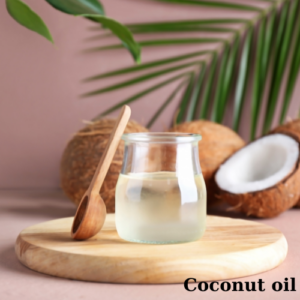
Add exfoliating agents.
Add your exfoliating agents to the mixing bowl. If using sugar or sea salt, pour in approximately 1/4 cup of your chosen exfoliant. Stir the mixture thoroughly to combine the ingredients, making sure the exfoliants are evenly distributed throughout the oil base. Continue mixing until you achieve a consistent texture, ensuring that every scoop of your scrub will deliver effective exfoliation.
Incorporate essential oils.
Add 5-10 drops of your chosen essential oil(s) to your scalp exfoliation formula. Choose oils based on your needs—tea tree oil is great for combating dandruff, while peppermint oil invigorates the scalp and promotes blood circulation. Mix the essential oils thoroughly into the formulation until everything is well combined, ensuring an even distribution of the beneficial properties. Test a small amount on your skin to confirm that you don’t have any sensitivities before applying it to your scalp.
Test the formula.
Apply a small amount of the mixture to a discreet area of your scalp, like behind your ear or on the nape of your neck.
- Wait for 24 hours to monitor for any signs of irritation or allergic reaction.
- Observe the area for redness, itching, or swelling, which may indicate a sensitivity to the ingredients.
If no irritation occurs after the 24-hour period, you can confidently proceed to apply the formula to your entire scalp. Always prioritize your safety by testing first before a full application.
Apply the exfoliation formula.
- Confirm that you are not allergic to the exfoliation formula before starting the application.
- Section your hair into manageable parts to ensure even coverage.
- Apply the exfoliation mixture directly onto your scalp, targeting areas with buildup.
- Use your fingertips to gently massage the formula into your scalp in circular motions.
- Focus on one section at a time, ensuring that the mixture penetrates the scalp thoroughly.
Let it sit.
Apply the formula generously to your scalp, ensuring even coverage. Allow it to sit for 10-15 minutes without rinsing. During this time, cover your hair with a shower cap to prevent any drips or mess. Relax and let the ingredients penetrate your scalp, maximizing their effectiveness for the best results.
Rinse and shampoo.
- Rinse your scalp thoroughly with warm water. Warm water helps dissolve any remaining exfoliation formula and prepares your scalp for the next steps.
- Apply your regular shampoo. Choose a sulfate-free option if you have sensitive skin, or go for a clarifying shampoo to remove build-up.
- Massage the shampoo into your scalp gently, focusing on areas that feel oily or irritated. This ensures a deep cleanse and promotes circulation.
- Rinse your hair again with warm water, making sure all shampoo is washed away. You want your scalp to feel fresh and clean without any residue.
- Follow up with your favorite conditioner. Apply it mainly to the lengths and ends of your hair, avoiding the scalp to prevent greasiness.
- Rinse the conditioner out with cool water to seal the hair cuticles, enhancing shine and smoothness.
Unlock healthier scalp secrets.
In conclusion, creating your own DIY scalp exfoliation formula is a rewarding and straightforward process that can significantly enhance your hair care routine. By following the steps we’ve outlined, you can enjoy a healthier scalp and potentially boost hair growth. Remember to incorporate this exfoliation into your regular regimen for the best results, and revel in the revitalizing benefits of your homemade treatment. Happy DIY-ing!
Essential supplies needed.
- Mixing bowl.
- Spoon or spatula.
- Measuring cups and spoons.
- Storage container (jar or bottle).
- Base ingredients (such as sugar, salt, or baking soda).
- Liquid carrier (such as coconut oil, olive oil, or aloe vera gel).
- Exfoliating agents (such as ground coffee or oatmeal).
- Essential oils (such as tea tree oil, lavender oil, or peppermint oil).
- Towel.
- Shower cap (optional).
- Hairbrush or comb.
Maximize your results.
- Choose the right base: Start with a gentle base like coconut oil, olive oil, or aloe vera gel to nourish your scalp while you exfoliate.
- Select exfoliating agents: Use natural exfoliants like sugar, sea salt, or ground coffee for effective yet gentle exfoliation.
- Incorporate essential oils: Add essential oils like tea tree, peppermint, or lavender for their soothing properties and to promote scalp health.
- Mix in anti-Inflammatory ingredients: Consider adding ingredients like honey or apple cider vinegar to help reduce inflammation and soothe irritation.
- Adjust the texture: Ensure your formula has a good balance of base and exfoliant; it should be gritty enough to exfoliate but not too harsh.
- Patch test: Always perform a patch test on a small area of your scalp to check for allergies or sensitivities before using the full formula.
- Use in moderation: Limit scalp exfoliation to once a week to prevent over-exfoliation, which can lead to dryness or irritation.
- Apply on Damp Hair: For best results, apply your exfoliation formula to damp hair, as this helps to open up the pores and enhance penetration.
- Massage gently: Use gentle circular motions to massage the formula into your scalp, focusing on areas that feel particularly dry or flaky.
- Rinse thoroughly: Make sure to rinse your scalp well with lukewarm water to remove all exfoliant particles and follow up with a mild shampoo to cleanse.
Unlocking the secrets to healthier hair: A comprehensive guide to scalp exfoliation techniques and benefits.
- Learn about scalp exfoliation benefits: Before you dive in, understand the benefits. Scalp exfoliation can help remove dead skin cells, unclog hair follicles, and promote a healthier scalp environment, which can lead to improved hair growth and reduced dandruff.
- Choose the right scalp exfoliation treatment: Look for treatments that suit your specific scalp needs. You can find various options, such as scrubs, masks, or chemical exfoliants. If you’re unsure, a quick search for “scalp exfoliation treatment near me” can lead you to local salons or stores with expert recommendations.
- Consider DIY scalp exfoliation at home: If you prefer a more hands-on approach, you can create your own exfoliation formula using natural ingredients like sugar, sea salt, or baking soda mixed with a carrier oil. This is a fun way to customize your treatment!
- Incorporate it into your routine: Start by exfoliating your scalp once every 1-2 weeks. Apply the treatment to your dry scalp, gently massaging in circular motions, then rinse thoroughly. This will help you maintain a healthy scalp without overdoing it.
- Follow up with proper care: After exfoliating, use a nourishing shampoo and conditioner to keep your scalp hydrated. Pairing exfoliation with the right aftercare will enhance the benefits and promote a healthy, vibrant scalp.
- Happy exfoliating! Your scalp will thank you.
Everything you need to know about scalp exfoliation treatments and benefits.
* Can scalp exfoliation help with dandruff and flakiness?
Absolutely, scalp exfoliation can help with dandruff and flakiness! When you exfoliate your scalp, you’re removing dead skin cells, excess oil, and product buildup that can contribute to dandruff. This process can also promote better blood circulation and encourage healthier hair growth.
Using a gentle scrub or a specialized scalp exfoliator can help keep your scalp clean and balanced. Look for products that contain ingredients like salicylic acid, which can help reduce flakiness and clear away dead skin. Just be sure not to over-exfoliate, as this can irritate your scalp. Incorporating scalp exfoliation into your routine every few weeks can lead to a healthier scalp and reduce those pesky flakes. Remember, a healthy scalp is the foundation for healthy hair!
* What ingredients should I look for in a scalp exfoliation formula?
When choosing a scalp exfoliation formula, you should look for a few key ingredients that can effectively help to remove buildup and promote a healthier scalp. Here are some you might consider:
1. Salicylic acid: This beta hydroxy acid is known for its ability to penetrate and exfoliate the scalp, helping to dissolve excess oil and dead skin cells.
Recommended product: Detox treatment, gentle detoxifying & exfoliating scalp scrub, salicylic acid & sea salt, paraben-Free, sulfate-free and silicone-free, for all scalp types: Kiehl’s Amino Acid Scalp Scrub.
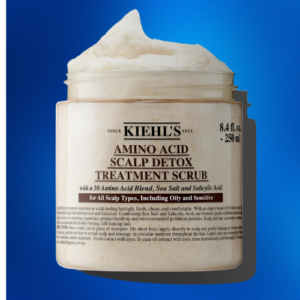
2. Glycolic acid: This alpha hydroxy acid can help to promote cell turnover and is effective in sloughing off dead skin, making your scalp feel refreshed.
Recommended product: The INKEY List Glycolic Acid Exfoliating Scalp Scrub: Scalp exfoliant helps remove product build up and boost healthy hair growth for healthy-looking hair.
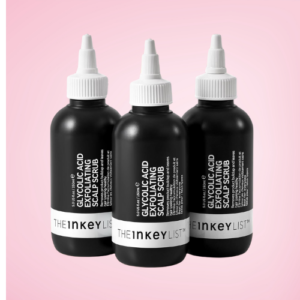
3. Physical exfoliants: Ingredients like sugar, sea salt, or ground exfoliating agents can provide a manual scrub to help remove buildup. Just be sure they are not too abrasive, as this can irritate the scalp.
Recommended product: Christophe Robin Cleansing Purifying Scrub with Sea Salt: This deep-cleansing scalp shampoo scrub is the ultimate detox treatment to invigorate hair and rebalance itchy/oily scalps. Sea salt is used to gently exfoliate the scalp, removing daily build-up to help calm itchy scalps while.
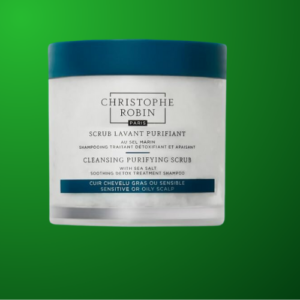 4. Tea tree oil: Known for its antifungal and antibacterial properties, tea tree oil can help maintain a healthy scalp environment while also providing a refreshing sensation.
4. Tea tree oil: Known for its antifungal and antibacterial properties, tea tree oil can help maintain a healthy scalp environment while also providing a refreshing sensation.
Recommended product: Yes To Tea Tree Scalp Treatment: Soothing formula to remove build up, leaving scalp cleansed & calm, with tea tree, witch hazel, apple cider vinegar & sage oil, natural, vegan & cruelty free.
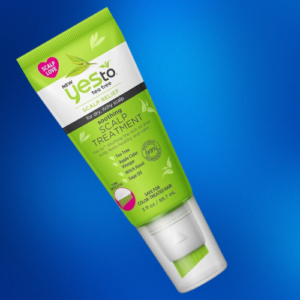 5. Aloe vera: This soothing ingredient can help calm the scalp and provide hydration, making it a great addition to an exfoliating formula.
5. Aloe vera: This soothing ingredient can help calm the scalp and provide hydration, making it a great addition to an exfoliating formula.
Recommended product: Le Petit Olivier Purifying Micellar Shampoo: Aloe vera and green tea, cleanses hair, reduce excess sebum, suitable for normal to oily hair, free of silicones.
6. Charcoal: Activated charcoal can help draw out impurities and toxins from the scalp, making it a popular choice in many scalp exfoliation products.
Recommended product: Briogeo Scalp Revival: Micro-exfoliating shampoo and charcoal + Tea tree, scalp treatment, vegan, the power of Binchotan charcoal to detoxify, Biotin to strengthen hair follicles, and Peppermint Oil to calm and soothe a dry, itchy, and irritated scalp.
Remember to choose a formula that suits your specific scalp type and needs. Regular exfoliation can help maintain a healthy scalp environment, but make sure not to overdo it—once a week is often sufficient. Happy scalp care!
Related: HOW TO CHOOSE THE RIGHT SHAMPOO FOR THINNING HAIR
Exfoliation for Scalp: Benefits, How-to, Products, and More
* Can scalp exfoliation improve hair growth and thickness?
Yes, scalp exfoliation can potentially improve hair growth and thickness. By removing dead skin cells, excess oil, and product buildup, exfoliation helps create a healthier environment for hair follicles. This can enhance blood circulation to the scalp, promote better nutrient absorption, and reduce the risk of clogged pores, which might hinder hair growth.
However, it’s important to note that while scalp exfoliation may support hair health, it shouldn’t be viewed as a miracle solution. Factors such as genetics, diet, and overall scalp care also play significant roles in hair growth. For best results, consider incorporating scalp exfoliation into your routine gently and not too frequently—once every couple of weeks is often sufficient. Always remember to follow up with a good conditioner to keep your scalp and hair moisturized!
